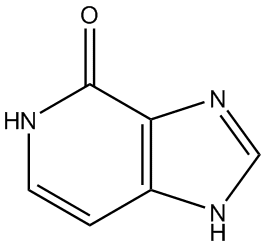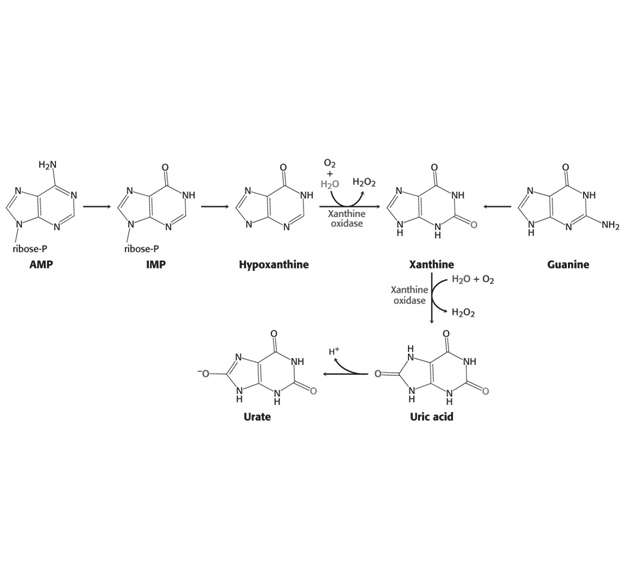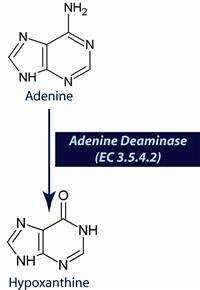Structural Biochemistry/Nucleic Acid/Nitrogenous Bases/Purines/Hypoxanthine
< Structural Biochemistry < Nucleic Acid < Nitrogenous Bases < PurinesHypoxanthine
Hypoxanthine (6-Hydroxypurine) is a naturally occurring purine derivative and deaminated form of adenine. It is an intermediate in the purine catabolism reaction and is occasionally found as a constituent in the anticodon of tRNA as the nucleosidic base inosine. It is also utilized as a nitrogen source in bacteria and parasite cultures for energy metabolism and nucleic acid synthesis.

Reactions
Hypoxanthine exists as an intermediate in the biodegradation of AMP (adenosine monophosphate). It is fist converted to xanthine with xanthine oxidase before it is excreted as urate.

A deleterious reaction that can occur is a spontaneous deamination of adenine to form hypoxanthine. This is a mutagenic process because the result is a pairing of hypoxanthine with cytosine rather than thymine, due to hypoxanthine’s guanine-like form. This could lead to an error in DNA transcription and replication.

References
Berg, et al. Biochemistry, 6th Ed. 2007.